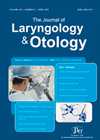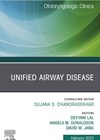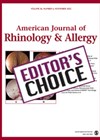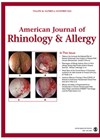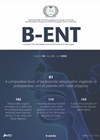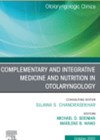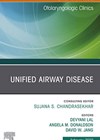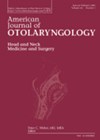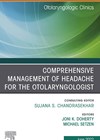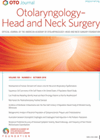
Journal Reviews
How to improve olfaction and enhance quality of life after laryngectomy
Total laryngectomy diverts airflow away from the nose and, hence, olfaction is greatly impaired. Undoubtedly, this affects quality of life in terms of loss of taste and flavour. Surgery and devices to re-establish airflow into the nose can be difficult...
How best can we manage Samter’s Triad/AERD?
The classic ‘Samter’s Triad’ of asthma, chronic rhinosinusitis with nasal polyposis (CRSwNP), and aspirin sensitivity is now referred to as aspirin-exacerbated respiratory disease (AERD) or non-steroidal anti-inflammatory-exacerbated respiratory disease. We often come across in our rhinology setting, patients with recalcitrant...
Can ‘cone beam CT scan’ (CBCT) facilitate one-stop rhinology clinic?
Chronic rhinusinusitis can be diagnosed on the basis of its classical symptoms such as nasal obstruction, facial pains, postnasal drip and hyposmia, supported by endoscopic findings such as oedema of middle meatus, mucopus and polyps. However, CT scan findings are...
A new hope for post-COVID olfactory loss?
Does anyone remember COVID? It seems that what happened between 2019 and 2021 is all but forgotten about. Aside from it cropping up on news feeds occasionally and a few out-of-date automated phone messages that start off with ‘During the...
A new idea for olfactory recovery, but not the evidence to support it
Smell training for olfactory loss of all types is a well-recognised treatment, and the typical regimen of rose, clove, lemon and eucalyptus is frequently used. This study looks to compare using eight essences rather than four to see if this...
Antioxidants for bacterial rhinosinusitis
This Turkish laboratory animal-based study looked at the effects of alpha-lipoic acid on inflammation, oxidative status, and tissue integrity in an animal model of experimentally induced acute rhinosinusitis and to compare these effects with antibiotic treatment using cephalosporins. Alpha-lipoic acid...
Make food thy medicine!
This is a useful paper emphasising how diet affects health and various ENT conditions. We have known for many years the power of food as medicine. We also know that what we eat can affect our bodies in multiple ways...
How do we manage immune deficiency-related ENT disorders
It is not unusual to come across patients with recurrent sinonasal infections, lung infections and recurrent ear infections needing regular antibiotics in the outpatient setting. Physicians need to have a high index of suspicion that patients may have immune deficiency...
Diagnostic features of acute invasive fungal sinusitis
Acute invasive fungal sinusitis (AIFS) is a rare but frequently lethal condition, commonly associated with a high morbidity among those that survive. It has gained recent media attention on account of its increased incidence following infection with (and treatment for)...
Balloon eustachian tuboplasty and inferior turbinectomy
This Taiwanese prospective case-control study looked at concurrent inferior turbinectomy (via submucosal turbinectomy) and balloon eustachian tuboplasty on symptoms related to eustachian tube dysfunction. A total of 50 patients who underwent inferior turbinectomy with balloon eustachian tuboplasty were recruited prospectively...
Is benign intracranial hypertension underdiagnosed in patients with spontaneous CSF leaks?
In ENT practice we come across spontaneous CSF leaks. Patients present either as unilateral watery rhinorrhoea or otorrhoea, or sometimes as hearing loss with a watery middle ear effusion. Clinicians, after confirming the diagnosis of CSF leak with beta 2...
REVISIONS acronym for preoperative imaging review in revision endoscopic sinus surgery
The authors have developed an acronym to aid evaluation of preoperative sinus CT imaging in revision endoscopic sinus surgery (RESS). To determine which pertinent aspects of anatomy to include, a systemic review of studies that investigated anatomic contributions to persistent...

